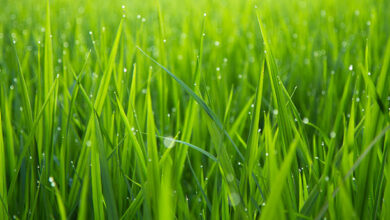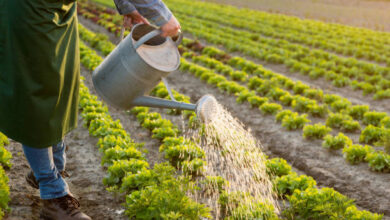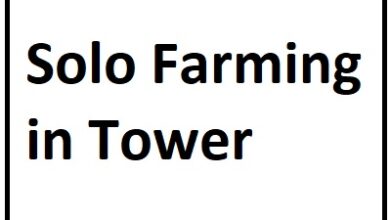When to harvest potatoes in Missouri: Timing, Tips, and Best Practices
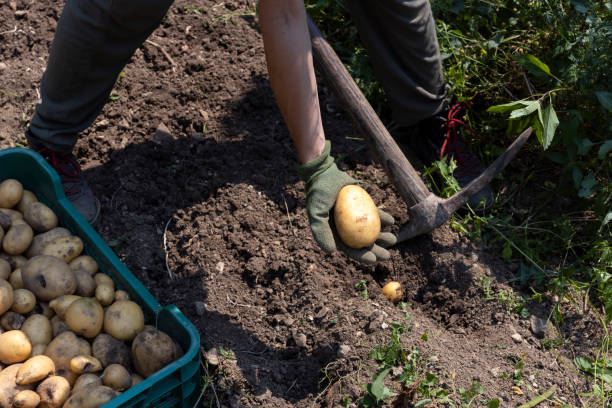
When to harvest potatoes in Missouri: Timing, Tips, and Best Practices
Unlock the secrets to a bountiful potato harvest in Missouri with our expert tips and timing guide. This comprehensive guide covers everything you need to know about harvesting potatoes in Missouri, including the best time to harvest, key indicators to watch for, and post-harvest tips. Proper timing and techniques are crucial for a successful potato harvest in Missouri, ensuring high-quality produce and optimal storage conditions.
Read Also: When to Plant Potatoes in Missouri: A Comprehensive Guide
Understanding Potato Growth Stages
- Key Growth Stages of Potatoes
- Planting and Early Growth: Potatoes are typically planted in early spring, once the soil has warmed to around 45°F. Early growth focuses on the development of roots and foliage, which is crucial for tuber formation.
- Flowering and Tuber Formation: Flowering usually occurs 6-8 weeks after planting, signaling the beginning of tuber formation. This stage is critical as the plants start to divert energy into developing the potatoes.
- Maturity and Harvest Readiness: Potatoes are considered mature when the foliage begins to yellow and die back. This stage indicates that the tubers have reached their full size and are ready for harvest.
Read Also: Organic Sweet Potatoes: All You Need To Know
When to harvest potatoes in Missouri
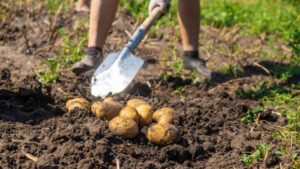
- Optimal Harvest Timing Based on Missouri’s Climate
- Understanding Missouri’s Growing Season: Missouri’s climate, characterized by hot summers and cool springs and falls, provides an ideal environment for growing potatoes. The growing season typically spans from March to June for spring crops and from July to October for fall crops.
- Spring vs. Fall Harvests: Spring-planted potatoes are usually ready for harvest by June or early July, while fall-planted potatoes can be harvested from late September to October. Fall harvests often yield better storage potatoes due to cooler weather.
- Temperature and Weather Considerations: Ideal harvesting conditions are during dry weather when the soil is not too wet. This prevents damage to the potatoes and reduces the risk of rot during storage.
Read Also: When to Plant Potatoes in Texas: The Ultimate Guide.
Key Indicators for Harvesting Potatoes
- Signs Your Potatoes Are Ready for Harvest
- Yellowing and Dying Back of Foliage: When the potato plants’ foliage turns yellow and starts to die back, it’s a sign that the potatoes are mature and ready for harvest.
- Skin Firmness Test: Gently rub the skin of a potato with your thumb. If the skin does not easily peel away, the potatoes are mature and ready for harvesting.
- Time Since Planting: Generally, potatoes are ready to harvest about 70-120 days after planting, depending on the variety. Checking the seed packet for specific maturity dates can provide additional guidance.
Harvesting Techniques and Tools
- How to Harvest Potatoes Effectively
- Tools Needed for Harvesting: Essential tools include a garden fork or spade, gloves, and a container for collecting the potatoes.
- Harvesting Methods: Carefully insert the garden fork or spade into the soil about 12-18 inches away from the plant to avoid damaging the tubers. Lift the plant gently and shake off excess soil to reveal the potatoes.
- Handling and Cleaning Potatoes: Handle potatoes carefully to avoid bruising. After harvesting, brush off excess soil but avoid washing them until you are ready to use them to extend their storage life.
Post-Harvest Care and Storage
- Ensuring Longevity and Quality of Your Potatoes
- Curing Potatoes: Cure potatoes by spreading them out in a cool, dark, and well-ventilated area for about 1-2 weeks. This process toughens the skin, making them more suitable for long-term storage.
- Ideal Storage Conditions: Store cured potatoes in a cool (35-40°F), dark, and humid environment, such as a basement or root cellar. Ensure good ventilation to prevent moisture buildup and rot.
- Common Storage Issues and Solutions: Watch for signs of sprouting or rotting. Remove any affected potatoes promptly to prevent them from affecting the rest of the batch.
Tips and Tricks for a Successful Harvest
- Expert Advice for Maximizing Your Potato Yield
- Soil Preparation and Maintenance: Ensure well-drained, loose soil for optimal potato growth. Incorporate organic matter like compost to improve soil fertility and structure.
- Watering and Fertilization: Consistent moisture is crucial, especially during tuber formation. Avoid over-watering, which can lead to rot. Use a balanced fertilizer to provide necessary nutrients.
- Pest and Disease Management: Regularly inspect plants for signs of pests like potato beetles and diseases like blight. Implement crop rotation and use organic or chemical controls as needed to manage these issues.
Conclusion
Harvesting potatoes in Missouri requires careful attention to timing and techniques. By following the guidelines in this post, you can ensure a successful and bountiful harvest. Start planning your potato harvest today and enjoy the rewards of homegrown produce. Share your harvest tips and experiences in the comments below!

